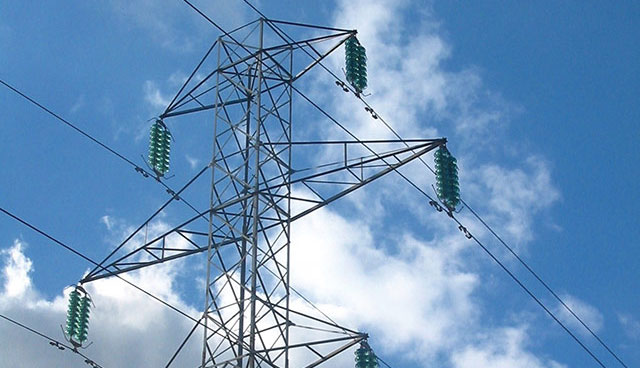Electricity markets are broken; can they be fixed?

That is the question Malcolm Keay of the Oxford Institute for Energy Studies asked delegates at this year’s Energy Ireland conference. The electricity market expert looked at the symptoms of the market failure followed by diagnosing the causes and proposing some possible solutions.
Malcolm Keay contends that the electricity industry is “turning upside down.” For example, the industry’s costs structure for generation is going from a marginal cost to a mainly capital based cost structure. The role of demand side management is now passive and will be much more interactive into the future. The role of grids in moving from a “neutral conduit to a smart player.” Keay highlights pricing “because we do not know where we are heading. At present all the pricing and cost information is roll up into a single unit price in kW/h and that is going to change.”
Symptoms
Keay lists the symptoms of the failures in electricity markets, including:
- Declining wholesale market prices across Europe;
- Low spark spreads and plant closures in many countries, including the UK;
- A flattening of the intraday price curve because of increased renewables penetration and disincentives for demand side response; and
- Frequent occurrence of zero or negative prices.
“These are not indicators of a heathy market,” observes Keay. He goes on to look at a couple of examples in detail. In Germany, retail prices have diverged from wholesale prices. Wholesale prices have remained flat whilst retail prices have continually increased. Also the intraday price in Germany has been constantly flattened each year. In the middle of the day the price is getting lower each year as more and more solar power had been installed. In addition, price signals for demand response are decreasing and not increasing. “The basic diagnosis is that the market was designed for the technologies of the twentieth century. It doesn’t work for the twenty first century technology. In my view we need a new market model and I am talking about something much more fundamental than the reforms that are underway in Ireland just now,” he contends.
Keay critiques the traditional view of wholesale electricity markets with different generators operating at different marginal costs. The price was set at the price the highest cost generator was accepted onto the system. “That relies on three basic starting points,” observes Keay. The first of these is that generators are flexible and can choose whether to generate or not at particular times. Secondly, that they have different marginal costs. Thirdly, that marginal costs are the main cost component. “None of this is going to be true in the new regime,” predicts Keay.
“The traditional regime did have a number of problems but they were manageable. Although the marginal costs are significant they were not the total costs in the system. Many economists thought the whole marginal cost approach was wrong and we should have a different pricing structure but nonetheless we ended up with marginal cost-based pricing,” he adds.
The second problem Keay identifies is what he calls “clustering and herd behaviour”. Many plants have the same technologies and therefore their prices cluster. For example, a system might have a number of nuclear plants or a number of similar coal plants. “This has been rationalised by people in the industry by calling them base load, mid-merit and peaking plants. But these are supply definitions not demand definitions. It is a rationalisation from the technology in place not from the structure of the market,” says Keay.
Finally, the problem with this original approach is that there are not signals to guide consumer behaviour. “In practice most of the price signals were not passed onto consumers and they got a single price in most situations, particularly in the domestic market,” he adds.
Keay says that these problems were always there but once intermittent renewable generation sources started to dominate the system the problems become unmanageable. The clustering of is now of renewable generating plants with zero marginal costs. This means that there are no effective signals for pricing and for investment from the system. “The effect of renewables coming onto the system, which I call ‘self-cannibalisation’, is to lower the price for everyone, including renewables, which means there is no money for investment”, he contends. “It also means that support given to renewables through feed in tariffs or obligations is permanently built into the system. There is no exit strategy within such a pricing strategy. There are also no useful signals for demand side [management] and there is no system optimisation. There is nothing in the system to ensure you get the right mix of plant. The whole theoretical basis of the pricing system in now non-existent. Pricing based on marginal cost kWh simply doesn’t work.”
Possible solutions
The observations on the market shortcomings highlight a now growing theme within the energy sector that electricity markets are no longer fit for purpose. During a similar presentation in Belfast in 2015 his observations where meet with some consternation from the audience and he was asked, ‘what is the solution?’ His reply then was that he didn’t know. Since then Keay has thought through some possible solutions to the problems he highlighted. He lists seven possible solutions and goes onto to look at three of them in detail. The seven possible solutions are:
- Stop supporting renewables;
- Central planning;
- Time of use pricing/refinements to energy only market;
- Fixed cost elements (flat rate charges or demand-related elements);
- Capacity/investment markets;
- Transactive pricing; and
- Two market approach.
Keay’s preferred solution is the two market approach which consists of two separate markets: ‘on demand’ and ‘as available’ markets on both the generation and consumer sides. ‘On demand’ is a class of consumption available when you want it. You also pay the price for available plant, which is lower. The underlying principal is that in the long run you could have two different pricing regimes. In the ‘on demand’ market you would have the short-run marginal price-based system and on the ‘as available’ market a long-run marginal cost price based system. On this basis pricing signals would get through to consumers. “They would be paying a price that genuinely reflected the cost of production, which is not the case now. They would have real price signals and from that their behaviour would be affected and you could understand what mattered to them,” he adds.
The UK’s night time tariffs are an example of such an approach which produce “huge changes” in consumer behaviour. He accepts that such a two market approach is complicated and involves radical change. In Portugal such an approach is being introduced for industrial customers.
In concluding Keay reflects: “electricity markets in Europe are broken. They are not fulfilling their basic function. They are based on last century technology. We need something new for the twenty first century. There are a number of possible options, which all have their own advantages and disadvantages. The key thing is to start discussion and refining these options so that a consensus can emerge on a way forward. Unless we can do this soon we are not going to get a sustainable low-carbon electricity market.”







